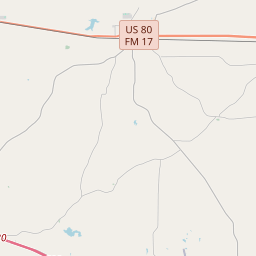Williams Medical Clinic Building







WILLIAMS MEDICAL CLINIC BUILDING
DR. JAMES W. WILLIAMS, A NATIVE OF MINEOLA, OPENED HIS MEDICAL PRACTICE IN 1946 AFTER HIS SERVICE IN WORLD WAR II. BECAUSE OF THE INCREASE IN THE NUMBER OF HIS PATIENTS, HE BUILT A NEW STATE OF THE ART MEDICAL FACILITY. THE CALIFORNIA-STYLE BUILDING HAS A RED BRICK EXTERIOR WITH A WRAP AROUND WINDOW ON ONE CORNER. ONE OF ITS MOST UNIQUE TRAITS IS THAT IT HAD CENTRAL HEAT AND AIR CONDITIONING, A SYSTEM NOT OFTEN FOUND IN THE 1950s. THE CLINIC IS AN IMPRESSIVE EXAMPLE OF A BUILDING FROM THE 1950s WITH A CONTEMPORARY MODERN ARCHITECTURAL STYLE IN MINEOLA. THOUGH THE BUILDING HAS BEEN PASSED FROM OWNER TO OWNER IT HAS STILL RETAINED THE SAME PURPOSE OF SERVING THE MINEOLA COMMUNITY.
RECORDED TEXAS HISTORIC LANDMARK – 2012
MARKER IS PROPERTY OF THE STATE OF TEXAS
As one of the most visible programs of the Texas Historical Commission (THC), historical markers commemorate diverse topics in Texas history, including: the history and architecture of houses, commercial and public buildings, religious congregations, and military sites; events that changed the course of local and state history; and individuals who have made lasting contributions to the state, community organizations, and businesses.
Texas is also home to the world's largest honky-tonk, Billy Bob's Texas in Fort Worth. The venue covers three acres and can hold up to 6,000 people.
In the early 1800s, the region attracted settlers from the United States who were drawn to the lush forests and abundant resources. The first permanent European-American settlement was established in 1846, and it was named Quitman after John A. Quitman, a prominent politician of that time.
During the Civil War, Wood County played a significant role in supporting the Confederacy. Many residents enlisted in the Confederate Army, and the area became a center for military recruitment and training. After the war, the county suffered economically, but with the introduction of the railroad in the late 19th century, the economy began to recover.
Wood County's economy primarily relied on agriculture, with the growth of cotton, corn, and timber industries. The establishment of sawmills and the development of the timber industry brought prosperity to the area. In the early 20th century, the discovery of oil and gas reserves further fueled the county's economic development.
Today, Wood County continues to be an important agricultural and industrial center in Texas. The county's history is evident in its charming small towns, historic sites, and natural beauty. The strong sense of community and appreciation for the region's heritage are still evident today, making Wood County a vibrant and inviting place to visit or live.
Wood County Timeline
This timeline provides a concise overview of the key events in the history of Wood County, Texas.
- 1850: Wood County is established by the Texas legislature.
- 1852: The first courthouse in Wood County is built in Quitman.
- 1860: The population of Wood County reaches 4,867.
- 1875: The railroad reaches Wood County, boosting economic growth.
- 1895: The county seat is moved from Quitman to Mineola.
- 1920: The population of Wood County peaks at 19,109.
- 1930: The Great Depression hits Wood County, causing economic hardship.
- 1958: Lake Holbrook is completed, providing a recreational area for residents.
- 1970: Wood County's population decreases to 12,230.
- 1983: Holly Lake Ranch, a gated residential community, is established in Wood County.
- 2000: The population of Wood County surpasses 37,000.
- 2019: Wood County experiences steady growth and continues to be a thriving community.